Of the four Brachypterolus spp. two, B.linariae (Steph.) and B.pulicarius (L.), are native and found within flowers of Toadflax (Linaria spp.). Both are widely distributed. B. vestitus (Keis.) and B. antirrhini (Murray) are established introductions first recorded during the 1920s, both are found on Antirrhinum flowers and are rare, with scattered records from southern England.
Our two species of Brachypterus are featured and both are common throughout England and Wales on nettles, sometimes being found together and often found on umbels in hot weather.
1.5-3mm. Broadly elongate beetles, rather depressed, with truncate elytra leaving pygidium as well as least one (two in Brachypterous) Abdominal tergites exposed. Penultimate or antipenultimate tergite often produced backwards laterally. Antennae 11 segmented with a loose (Nitidulidae) and sometimes very gradual three segmented club (Omaliinae which, without experience these superficially resemble), care should be taken as the club may become compressed during setting. Basal segments greatly enlarged in Kateretes spp., less so in other genera, but never with a curved scape (Histeridae, which have truncate eltra). Inserted under front margin of head between eyes and mandibles. Eyes prominent. Pronotum transverse or quadrate, broadest at or behind middle, hind angles rounded or right angled (Brachypterolus). Finely bordered. Elytral border, from above, visible only towards base, not or only slightly raised (Nitidulidae), hind margin curved. Scutellum large. Entire upper surface punctate and finely pubescent. Tibiae dilated apically. Tarsi pseudotetramerous, basal segments bilobed, often strongly so. Claws with strong basal tooth in Brachypterolus and Brachypterus, broadly thickened in Kateretes.
Easily recognised by the exposed abdominal segments, one of which is usually produced backwards and the gradually clubbed antennae.
Joy's handbook omits Brachypterus Linariae St. and B.vestitus Kies. Kirk-Spriggs 1996 RES Handook keys out all the British species with good clear line drawings of morphological characters as well as male and female genitalia.
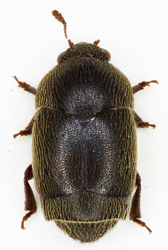
Brachypterolus pulicarius
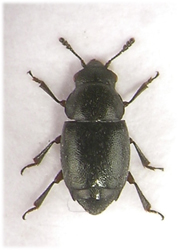
Brachypterus glaber
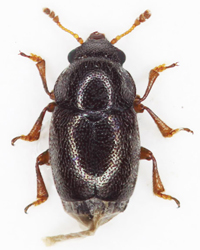
Brachypterus urticae
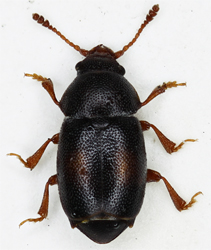
Kateretes pusillus
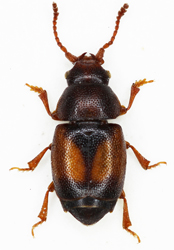
Kateretes pusillus
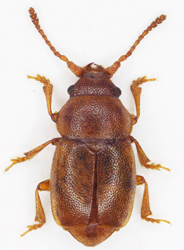
Kateretes pusillus
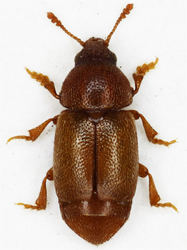
Kateretes rufilabris